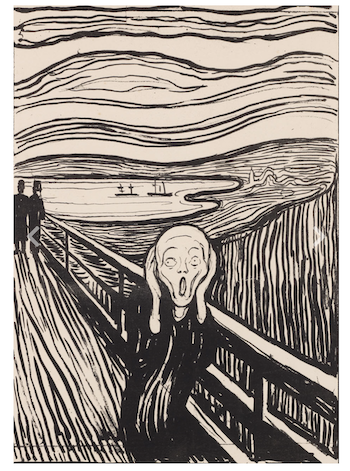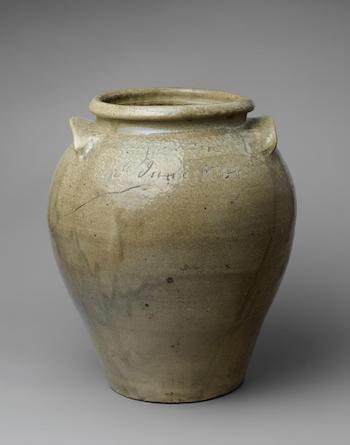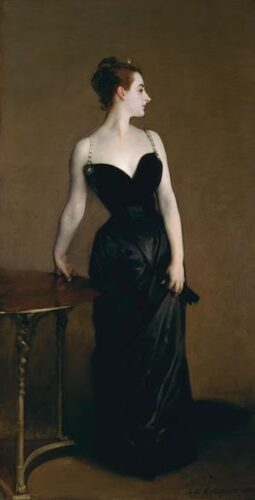Arts Feature: The Best of Visual Arts and Design, 2023
By Mark Favermann
Amid the year’s chaos, art was a saving grace, civilizing and humanizing: a much needed blessing that allowed us to breathe, to inhale beauty and perhaps a whiff or two of truth.

The Embrace by Hank Willis Thomas. Photo: Mass Design Group
2023 has been quite a year. A short list of the various crises that commanded the world’s attention over the past 12 months would include apocalyptic weather, devastating war, horrific violence, the arrival of artificial intelligence, gender inequality, and unusually huge amounts of mendacity. All of these dire issues are symptomatic of an increasingly politically polarized planet. Amid this chaos, art has been a saving grace, civilizing and humanizing: a much needed blessing that allowed us to breathe, to inhale beauty and perhaps a whiff or two of truth. Neuroscience backs up my contention: research has affirmed that art can positively influence both our mental and physical well-being and enhance our sense of community.
Several appealing examples of visual arts and design have come to the state’s rescue this year. Last winter, there was the unveiling of The Embrace, the 22 ft high memorial to Dr. Martin and Coretta King on Boston Common. Created by conceptual artist Hank Willis Thomas and privately funded, The Embrace abstractly memorializes the hug Dr. King shared with his wife Coretta after he won the Nobel Peace Prize in 1964. As with much public art, there was inevitably controversy. The Embrace is a celebration to some, a graceless failure to others. As an example of public art that’s intended to be provocative, the sculpture fulfills its mission. This monumental piece is not as terrible as its critics insist nor as wonderful as its fans proclaim.

The Scream, Edvard Munch, 1895, Lithograph
The exquisite Edward Munch: Trembling Earth exhibition at The Clark Institute of Art in Williamstown featured rarely shown landscapes, figure portraits, and an impressive selection of drawings and prints by the Norwegian master. There was even a lithograph of the artist’s most celebrated work, The Scream. Arts Fuse review
Over the last several decades there has been considerable construction in Boston — in locations like the Seaport District, upper Boylston Street in the Fenway, and the disconnected Edge City on Guest Street in Brighton. The result has generally yielded large groupings of uninspired, nondescript, and boring steel frame and curtain wall buildings. Still, there have been anomalies. Perhaps the most interesting one recently is Boston University’s Center for Computing and Data Sciences or “Jenga Building” near Kenmore Square. BU has finally erected a strong visual statement, an iconic structure, for its campus. Touted to be the “greenest building” in Boston because of its zero-carbon footprint, the 19-storey structure resembles the wooden, block-balancing, tower-tumbling game of Jenga. It is viewed best from a distance — from Memorial Drive across the Charles River — rather than close-up. The building was conceived as a vertical sub-campus by its architects, Canadian-based KPMB. Geometry has been put in the service of university branding. This is not a unique structural configuration, but the “Jenga” building has already become an instant Beantown landmark.
Gloucester’s usually staid Cape Ann Museum hosted an Edward Hopper blockbuster this year. As part of the city’s celebration of its 400th anniversary, the Cape Ann Museum, in partnership with the Whitney Museum, exhibited a small but powerful exhibition of Edward Hopper’s visions of Cape Ann. The exhibit featured 56 of his works and seven by his wife/partner Josephine (Jo) Nivision Hopper. Jo was the driving force behind Hopper’s majestic career, and she also helped launch him in the New York art world through her extensive connections. The Hoppers first came to Gloucester as part of a vital artist community in 1923. Initially, he focused on house portraits, rendering them with crisp precision. Jo influenced Hopper to paint with the more portable watercolors rather than just with oils. This exhibit brilliantly underscored that Gloucester is where Hopper became a mature artist. Arts Fuse review
Another major event was the resurrection of Boston Cyberarts after the death of its founder/director George Fifield in 2022. Donations from board members (I am one), public grants, and a family trust ensured that Boston Cyberarts will continue to reflect Fifield’s creative passions, his visceral and intellectual connection to art and technology as well as his enthusiasm and unbounded curiosity.

Dave (later recorded as David Drake) storage jar, 1834. Photo: MFA Boston
With over 200,000 unique objects, some of them amazing, the Harvard Art Museums (The Fogg Museum, the Busch-Reisinger Museum, and the Arthur M. Sackler Museum) could arguably be considered the greatest university museum in the world. The institution is committed to preserving, documenting, presenting, interpreting, and strengthening the collections and resources in its care. To encourage greater outreach, the Harvard Art Museums has bestowed an invaluable gift on art lovers. As of June 2023, admission is free for all visitors.
With its show Hear Me Now: The Black Potters of Old Edgefield, South Carolina Boston’s MFA presented the masterworks of a creative genius. The exhibit’s outsize ceramic food storage jars are inscribed with personal poetry that are part of a compelling historical narrative. Born a slave in 1801, David Drake or “Dave the Potter” worked at one of the major ceramic factories in the antebellum South where jars were mass-produced and exported throughout the area. Drake, who could read and write — despite its prohibition among most slaves — embellished his works with eloquent verse. According to the MFA, “As documents, the jars are remarkable primary-source accounts of a life lived in bondage; as art, they embody the spirit and soul of a man whose cruel circumstances couldn’t snuff his creativity and longing for human connection. “ The career and accomplishments of Dave the Potter represent an unfortunately neglected episode in art history that has been recently commemorated by an award-winning, beautifully illustrated children’s book.

John Singer Sargent, Madame X (Madame Pierre Gautreau), 1883–1884. Photo: The Metropolitan Museum of Art
Now + There strives to create works of temporary public art that inspire, that open minds, dialogue, and spaces across Boston. All through 2023, the organization envisioned public art as a conversation that should take place between community and artist, an exchange in which it bravely admits that not everyone will like the work that it eventually presents. Social justice issues are uppermost on Now + There’s mind: the group’s invigorating urban energy — if not always their aesthetics — are heartening.
Last, but perhaps not least, is the MFA’s seminal show Fashioned by Sargent. This blockbuster exhibit features John Singer Sargent’s portraits, with an emphasis on the fashionable garments worn by his sitters. The artist brilliantly exploited dress and class in his pictures; he used his sartorial selections to dramatize the intersection between personality and social status. The result is an array of 50 portraits — with over a dozen garments also on display — that explores Sargent’s notion of the complicated relationship between dress and ego from the Gilded Age through the Edwardian period. This is an historic exhibition of major works by one of art history’s most talented portrait artists — the round-up includes his most famous portraits and sitters. Here Madame X meets John D. Rockefeller. Arts Fuse review
Mark Favermann is an urban designer specializing in strategic placemaking, civic branding, streetscapes, and public art. An award-winning public artist, he creates functional public art as civic design. The designer of the renovated Coolidge Corner Theatre, he is design consultant to the Massachusetts Downtown Initiative Program and, since 2002 has been a design consultant to the Boston Red Sox. Writing about urbanism, architecture, design and fine arts, Mark is contributing editor of the Arts Fuse.

Wonderful article as usual